Carpet Museum of Iran | A Persian Carpet Journey
Ever pondered why Iranian carpets are celebrated globally as masterpieces of textile art? Step into the Carpet Museum of Iran— a place where every carpet represents Iranian craftsmanship and culture.
Join us as we explore the history, sections, and guide you through. Whether you're a carpet enthusiast or a curious traveler, the Carpet Museum of Iran offers a captivating exploration of the intricate threads of time and artistry.
About Carpet Museum of Iran
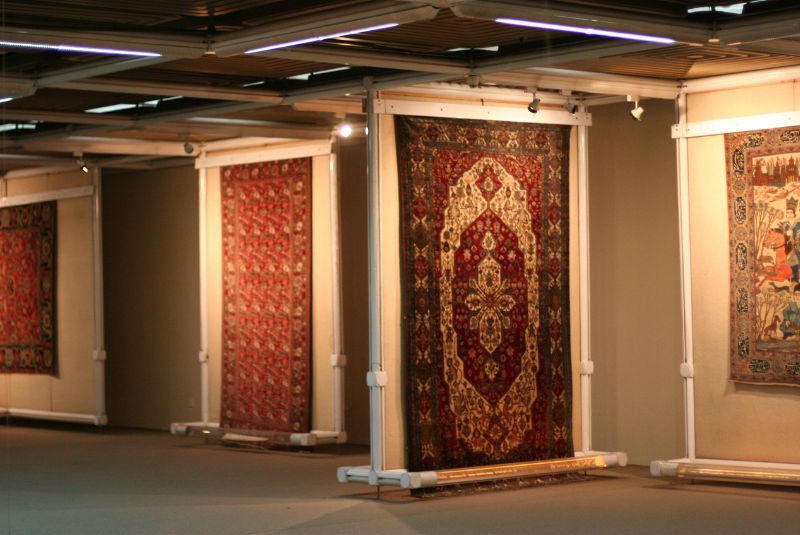
Commissioned by Farah Pahlavi and opened in February 1977, the national carpet museum of Iran in Tehran spans an impressive 12,000 square meters, weaving together the history of Iranian carpet art and industry.
Rooted in the year 1340, the initial steps were taken to construct a carpet gallery, yet the project remained unfinished for about 15 years until a renewed vision emerged. After a year and a half of meticulous renovation, the space transformed into the Iranian Carpet Museum—a dedicated sanctuary for the research and exploration of the intricate background and history of Iranian carpet craftsmanship.
The primary objective was clear: to showcase the invaluable carpets and rugs crafted by distinguished Iranian weavers. For Iranians, carpets hold a special and irreplaceable place. The art of carpet weaving, a highly specialized and complex craft, demands precision and time, reflecting the dedication woven into each fiber.
Within the museum's walls, Iranian carpets become more than mere floor coverings—they are bearers of anecdotes from different eras. Each carpet has its unique design and pattern, serving as a window into a part of history. With their high quality and use of natural materials, Iranian handwoven carpets have garnered fans worldwide.
For those keen on exploring the intricacies of this traditional Iranian art, at the Iranian Carpet Museum, they can gain insights into the craftsmanship and cultural significance of these extraordinary creations. If you seek a place to witness the beauty of historical carpets, a must-visit destination in Tehran, the Iranian Carpet Museum undoubtedly stands among the world's finest choices.
History of Carpet Weaving in Iran
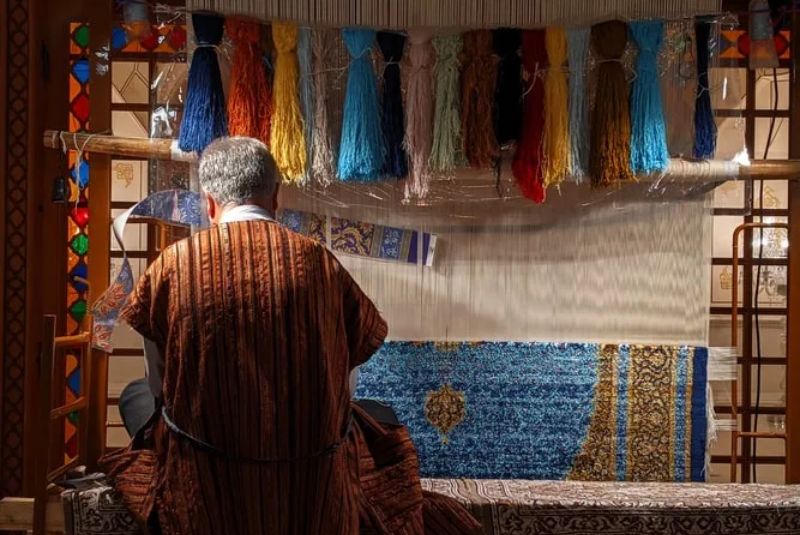
Carpet weaving in Iran is a venerable and culturally significant artistic tradition that spans millennia, contributing to the rich tapestry of Iranian heritage. The term "carpet" in Iran encapsulates a myriad of styles, including Kilim, Ghalicheh, and more, each serving diverse purposes from floor coverings to decorative elements on walls and beds.
Elevated beyond mere craftsmanship, carpet weaving in Iran is recognized as a distinguished art form. Persian rugs, emblematic of the diverse characteristics inherent in various Iranian ethnic groups, stand as unique cultural expressions. Particularly prized are handmade carpets, where the weaver, traditionally a woman, employs imaginative creativity in the absence of written patterns, resulting in singular masterpieces.
The origins of this artistic tradition can be traced back to the Achaemenid period, and archaeological findings, such as the discovery of the world's oldest known carpet in southern Siberia dating back 2,500 years, underscore the longevity of this craft.
Carpet weaving in Iran extends beyond functional utility, serving as a vivid narrative medium woven with threads that chronicle the history, culture, and art of the Iranian people. The Carpet Museum of Iran serves as a pivotal repository for this heritage, meticulously curating an extensive collection of carpets from various epochs and regions. Exhibiting an array from well-designed Isfahan carpets to intricately crafted handmade rugs of Qashqai nomads, the museum provides an authoritative platform for enthusiasts and scholars to explore the nuances of Iranian carpet weaving.
Persian Carpet Museum Different Sections
The Carpet Museum of Iran is a multifaceted institution that offers an amusing experience across its various sections, providing visitors with an intricate exploration of the nation's esteemed carpet-weaving heritage.
Ground Floor (Main Hall)
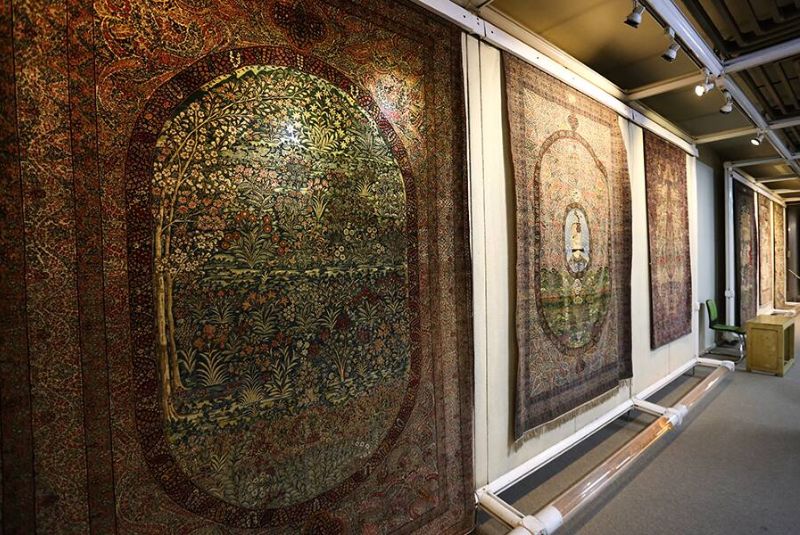
The heart of the museum resides on the ground floor, where the main and permanent hall showcases 150 carpets dating from the 9th century to the contemporary period. Among these, 135 are masterpieces sourced from diverse Iranian cities, including Isfahan, Tabriz, Kashan, Kerman, Khorasan, and Kurdistan. The exhibition not only displays the exquisite craftsmanship but also depicts the culture and customs of different regions. A central pond enhances the aesthetic appeal of the hall, creating a serene ambiance. Additionally, specialized films about carpet and rug weaving are screened, providing visitors with an educational experience.
First Floor (Temporary Exhibition Hall)
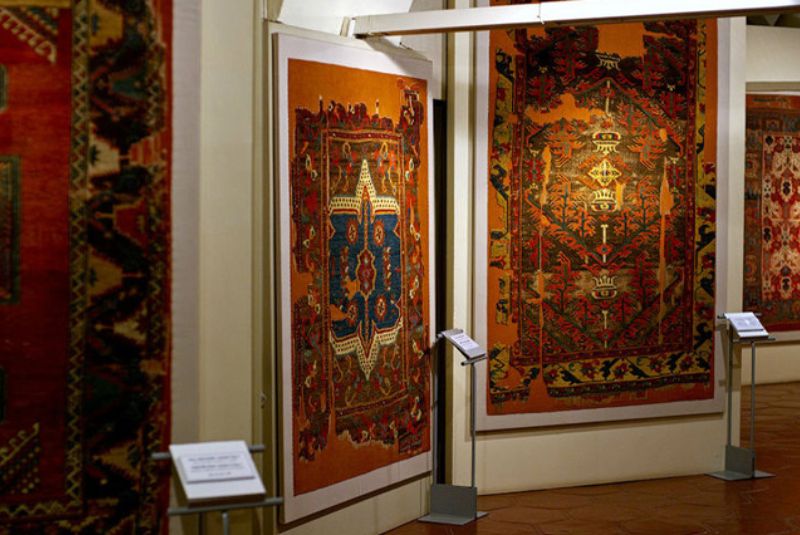
Ascending to the first floor, visitors encounter a dynamic space designated for seasonal and temporary exhibitions. Over the years, this hall has hosted notable exhibitions, such as the Botte design exhibition, an exhibition of prayer rugs and carpets spanning the 10th to the 14th century AH, and showcases of outstanding flower carpets from the 8th century AH to the present day. This floor serves as a vibrant canvas for diverse artistic expressions related to carpets, offering a unique experience with each visit.
Library
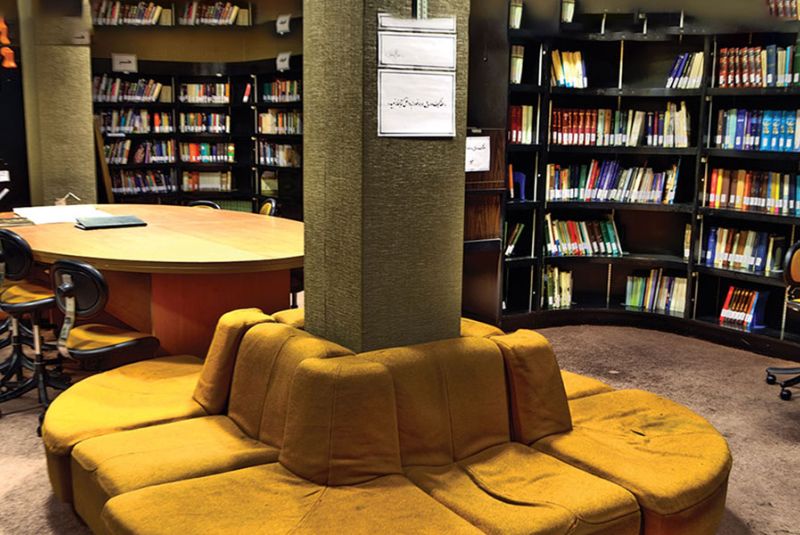
The Iranian Carpet Museum boasts a specialized library, a scholarly resource housing over 3,500 titles in various languages, including Arabic, German, Persian, English, and French. This extensive collection caters to students, researchers, and carpet enthusiasts, fostering a comprehensive understanding of the artistry, history, and techniques associated with Iranian carpet weaving.
Exhibition Hall
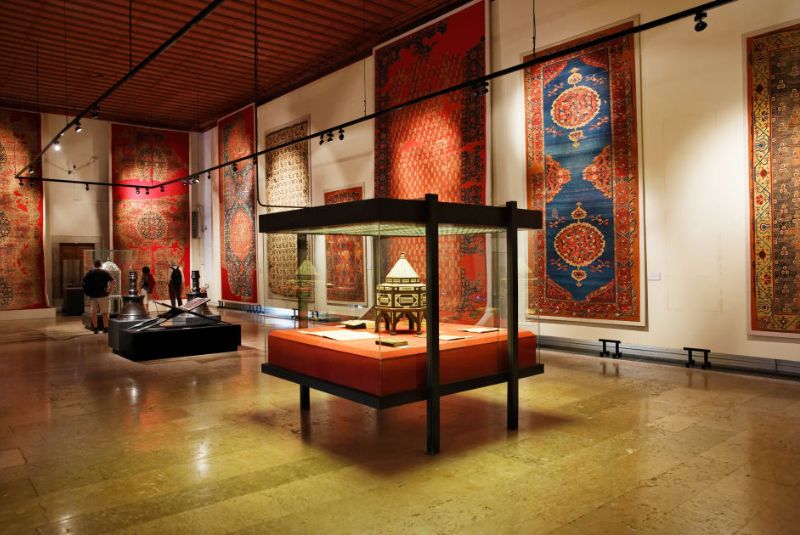
The museum's exhibition hall serves as an audio-visual hub, featuring films and slides that delve into the intricacies of rug and carpet weaving. This space is designed to provide visitors and enthusiasts with a deeper insight into the art form, allowing them to explore the craftsmanship and creativity of the artists.
Museum Exhibition Booth
Adjacent to the library, a dedicated section is allocated for a booth offering cultural products related to the carpet industry. Here, visitors can purchase books and other items that further enhance their understanding and appreciation of this traditional Iranian art.
Exquisite Carpets in the Iran Carpet Museum
Among the myriad treasures housed within the Iran Carpet Museum, three notable carpets stand as exquisite examples, each deemed a national treasure:
Mirza Kuchak Khan Rug
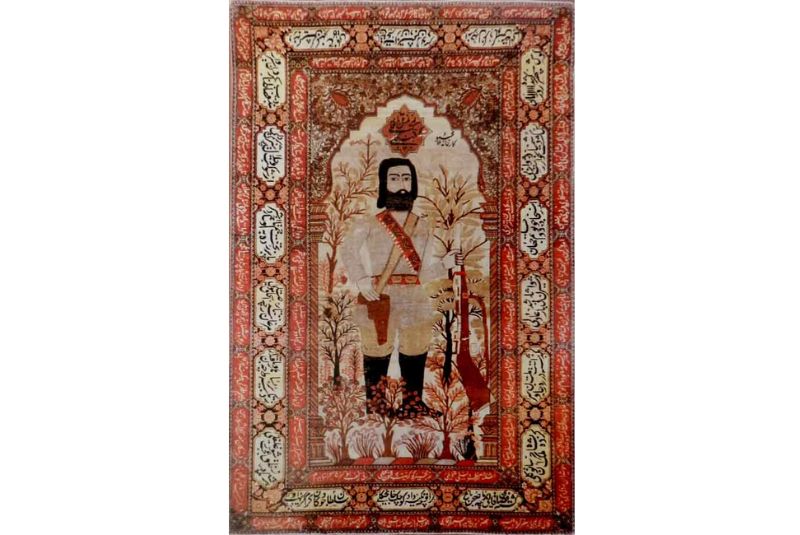
This distinguished carpet, measuring 130 in 220 cm, was meticulously woven by Iranian artists from Kashan. The centerpiece of this national treasure portrays the iconic figure of Mirza Kuchak Khan adorned in a military uniform, armed with a handgun. Above the image, an inscription reveals the association with Mullah Mahmud's factory, suggesting its origin to be at the end of the Qajar period. The Mirza Kuchak Khan Rug is a testament to the artistry of Iranian carpet weaving, capturing a moment in history with precision and skill.
Toranj Dar Carpet
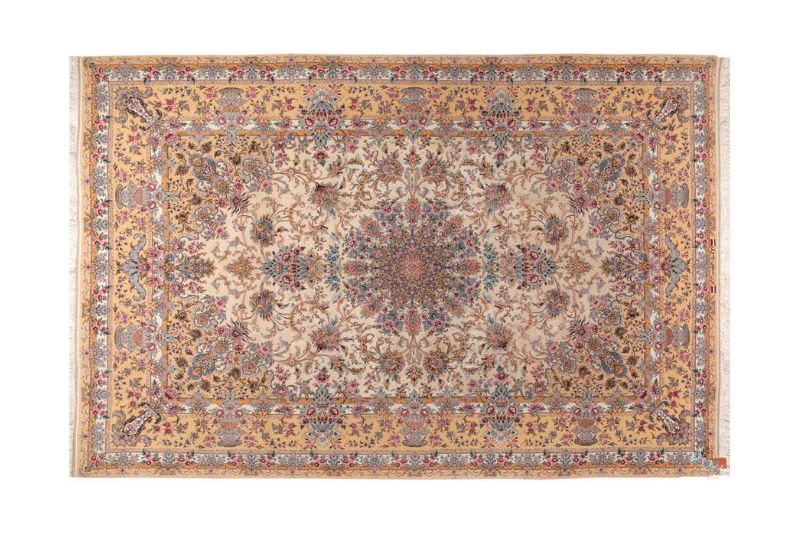
Woven with a combination of cotton thread and wool pile, the Toranj Dar Carpet emerges as a masterpiece from the 14th century of the Hijri calendar. Renowned for its exquisite craftsmanship, this carpet exemplifies the artistry and skill embedded in Iranian carpet weaving. The blend of materials and the precision of the weaving process contribute to the unique allure of the Toranj Persian Carpet, earning it a distinguished place within the museum's collection.
Shahnameh Rug
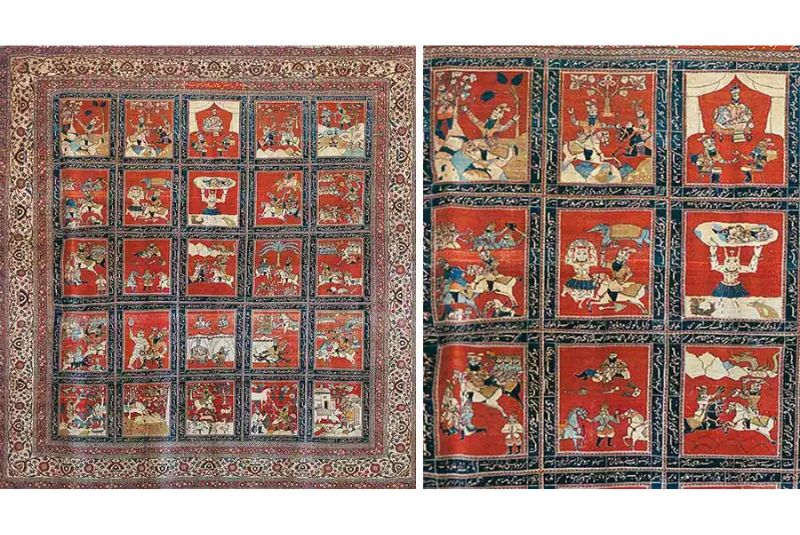
The Shahnameh Rug unfolds a captivating narrative, showcasing elements of Iranian literature, myth, religion, and the rich arts and culture of the nation. Crafted at the Mousavi Siret's carpet workshop, this masterpiece is a collaborative effort involving young Iranian artists and the expertise of the master, integrating both traditional craftsmanship and modern computer technology.
Carpet Museum of Iran Location and Access
Address:
Carpet Museum of Iran, Southern East Side Crossroad, Dr Fatemi Crossing, North Kargar St., Enqelab Square, Tehran, Iran.
Opening Hours:
- Open every day (except Mondays)
- First Half of the Year: 9:00 am to 6:00 pm
- Second Half of the Year: 9:00 am to 5:00 pm
Getting There:
The Carpet Museum of Iran, situated on the northwest side of Tehran's enchanting Laleh Park, welcomes visitors from all corners of the globe. To ensure a seamless journey, both public transportation and private vehicles are viable options.
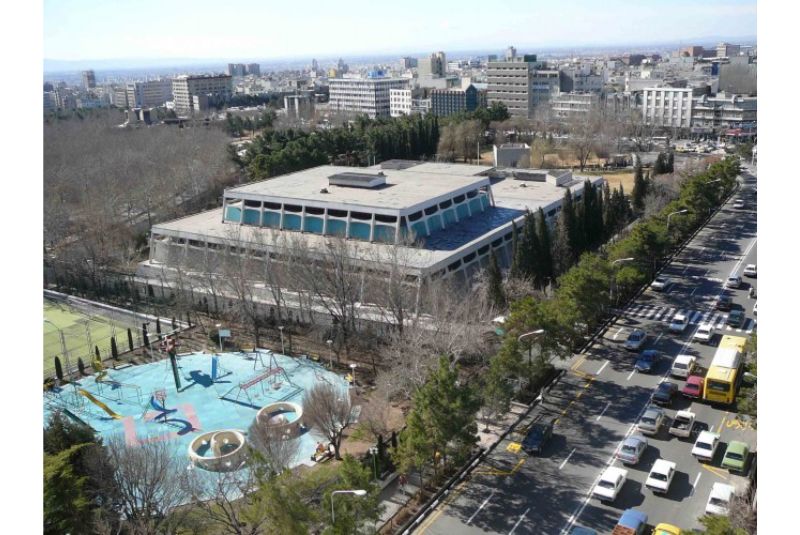
Exploring the Surroundings:
The museum's strategic location allows visitors to indulge in the beauty of Laleh Park, a picturesque setting that enhances the overall experience. Additionally, on the west side of Laleh Park, the Tehran Museum of Contemporary Art awaits art enthusiasts.
Accessible Attractions:
Using the Tehran subway's yellow line, visitors can reach the Teatre Shahr Metro Station, providing a gateway to a plethora of nearby attractions. Don't miss the opportunity to explore cultural landmarkss like Masoudieh Palace, National Jewelry Museum, Golestan Palace, Tehran Grand Bazaar, National Museum of Iran, Portal of Bagh-e Meli, and City Park (Park-e Shahr).
Bottom Line
The world of carpets, especially Iranian ones, is filled with intricate knots that tell stories of tradition, artistry, and cultural richness. If you're fascinated by the beauty of Iranian carpets and their deep history, a visit to the Carpet Museum of Iran is a must.
Share your story!
Comment below and let us know about your Experience.
Your story inspires others!


Comment
Leave a Comment